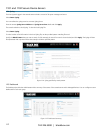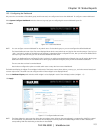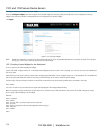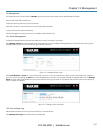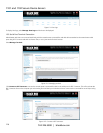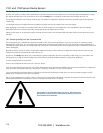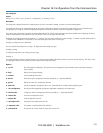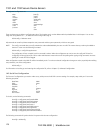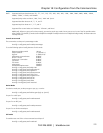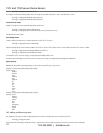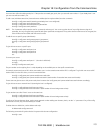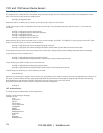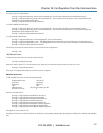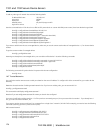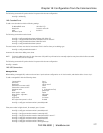
1101 and 1102 Secure Device Servers
724-746-5500 | blackbox.com
120
The registered configurators are:
alerts
auth
cascade
console
dhcp
dialin
eventlog
hosts
ipaccess
ipconfig
nagios
power
serialconfig
services
slave
systemsettings
time
ups
users
There are three ways to delete a config element value. The simplest way is use the delete-node script detailed later in this chapter. You can also
assign the config element to "", or delete the entire config node using -d:
# /bin/config -d 'element name'
All passwords are saved in plaintext except the user passwords and the system passwords, which are encrypted.
NOTE: The config command does not verify whether the nodes edited/added by the user are valid. This means that any node may be added to
the tree. If a user runs the following command:
# /bin/config -s config.fruit.apple=sweet
The configurator will not complain, but this command is useless. When the configurators are run (to turn the config.xml file into live
config) they will simply ignore this <fruit> node. Administrators must make sure of the spelling when typing config commands. Incorrect
spelling for a node will not be flagged.
Most configurations made to the XML file will be immediately active. To make sure that all configuration changes are active, especially when editing
user passwords, run all the configurators:
# /bin/config -a
For information on backing up and restoring the configuration file, refer to Chapter 15, Advanced Configuration.
14.2 Serial Port Configuration
The first set of configurations you need to make to any serial port are the RS-232 common settings. For example, setup serial port 5 to use the
following properties:
Baud Rate 9600
Parity None
Data Bits 8
Stop Bits 1
label Myport
log level 0
protocol RS232
flow control None
To do this, use the following commands:
# config -s config.ports.port5.speed=9600
# config -s config.ports.port5.parity=None
# config -s config.ports.port5.charsize=8
# config -s config.ports.port5.stop=1
# config -s config.ports.port5.label=myport
# config -s config.ports.port5.loglevel=0
# config -s config.ports.port5.protocol=RS232
# config -s config.ports.port5.flowcontrol=None
The following command will synchronize the live system with the new configuration:
# config -r serialconfig



